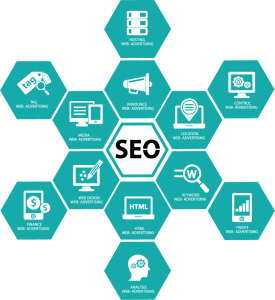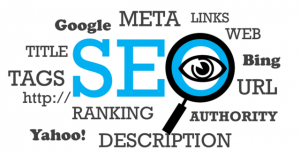Having a website that is simple, informative and eye-catching is essential to any business. However, unless you understand the principles of website design and the strategies to create a successful website, it can be difficult to achieve this. Thankfully, there is a website design plan that is designed to provide more knowledge on this topic and will help you build a high-quality website that brings in visitors and more business.
1. Uncovering the Secrets of Website Design
Creating a sleek and effective website is simpler than ever before, but if you want to unlock its true potential, you’ll need to get a little deeper. Here are the secrets to taking your design to the next level.
Focus on Layout Design. Your website’s layout should be the cornerstone of your design. Balance out the white space and make sure it doesn’t feel cluttered. Choose a font that iseasy-to-read and flows well across the site. Combine background images with bold text to break up the page and capture attention.
Incorporate elements like grids, sections and columns to optimize your layout. Use effective calls-to-action and study the behaviour of visitors to make sure the layout encourages behaviour that brings value to your company.
Pay Attention to Details. In website design, details really matter. Take the time to choose icons and images that look great, set up a simple contact page with clear labels, and keep buttons and forms consistent. Make sure the design is built on a foundation of solid UX principles.
Stay Updated on Current Trends. Trends in website design change all the time, thanks to advances in technology and the ever-evolving preferences of users. Research what other sites are doing, see what works and then incorporate it into your design. Some of our favorite trends for website design include:
- Vibrant Colors and Bold Typography
- Interactive Animations and Graphics
- Mobile-Friendly Design
- Responsive Images and Videos
- Minimalist Design and Simplified Navigation
These are just a few of the secrets you can use to take your website design up a notch. Experiment with different methods and find the look that works best for you.

2. Strategizing for Greater Knowledge and Impact
Length: 500–600 words.
Intellectual growth can be a difficult journey. It requires careful thought and strategizing if you want to make the most of your available resources and resources. Here are some tips that can help you maximize your knowledge and yield greater impact from your efforts.
- Don’t Just Learn New Skills – Level Up Your Existing Knowledge. You can build on what you already know by researching better ways to utilize those skills. See if you can find other dimensions to your existing knowledge, such as the history of your chosen field. The deeper your understanding, the more value you will be able to glean from your existing skills.
- Set Goals, But Don’t Get Stuck In A Rut. Be sure to set realistic goals for yourself, but also be prepared to try new things. Don’t be afraid to abandon projects that aren’t going well or explore new ideas. Innovation is often the key to making a significant impact in any field.
- Take In A Different Perspective. Reading works of those in the same field as you can help offer new insights, but don’t get too caught up in the same cycle of thought. Consider taking in ideas from other areas that may have something to offer, adding a unique element to what you produce and increasing the value of your output.
Taking the time to strategize, devise and utilize the resources available to you can help you gain the knowledge and skills necessary for achieving your goals. By exploring the options available, you increase the chance of making a greater impact from your efforts. Keep in mind that the key is to be methodical and open-minded at the same time.

3. Mapping Out a Website Design Plan
If you want to create a website that is professional and effective, you must have a website design plan in place. A website design plan consists of all the details that go into a website, from the layout and visuals to the content and navigation structure. Here are three steps you need to take to successfully map out your website design plan:
- Identify Your Goals
The first step in is to identify your goals. Before beginning the design process, you need to have a clear vision of what you are trying to achieve. Are you trying to build a brand? Increase sales? Create a buzz around the launch of a new product? Knowing your goals will provide focus and help you create a plan that will be successful. - Research Your Audience
The second step is to research your audience. Knowing who you are designing for will help you understand their needs and create a website that meets their expectations. Do some research to better understand who your target audience is and gain an understanding of their interests, habits, and preferences. - Develop a Structure
The third step is to develop a structure for your website. This includes deciding on the page layout, page hierarchy, page types, and navigation elements. An effective website structure is essential for providing a good user experience and ensuring easy navigation.
By following these steps, you can map out a successful website design plan. The key is to start with understanding your goals, researching your audience, and developing a clear structure. Once you have this in place, the website design process becomes much easier.
4. Leveraging Website Design for Superior Results
A great website design is the backbone of any online business venture. With the right design, you can become a powerful marketer and snag an impressive number of customers. Enhancing your website design with features and aesthetics will improve your bottom line and take your business to new heights. Here are several practices you should be leveraging to get superior results.
- Focus on User Experience: User experience is one of the key components of a website. Investing in user research will pay off in spades. Analyze what elements confuse and engage your customers, then tailor your design accordingly. Implementing tools like heat maps and testing tools can help you get a better understanding of what works.
- Pay Attention to Branding: Your website needs to align with your brand identity. People should be able to recognize your website in a glance. To make sure your website exudes your brand values, use colors, themes and design elements that reflect your brand. Keep your logo prominently visible and make sure it is consistent throughout your site.
- Incorporate Engaging Content: Content is the soul of any website. Your content should be attractive and engaging. Consider using visuals, videos and interactive elements to make your content interesting. Make sure the content resonates with the audience and encourages them to take action.
Try implementing these practices to get the most out of your website design and elevate your business to the heights of success. The website design plan to more knowledge is an invaluable tool to help organizations improve their online presence and increase the breadth of knowledge they offer to their customers. With the help of this design plan, organizations can pay more attention to the details and functionality of their website and allow customers to explore valuable information across multiple topics – ultimately providing their customers with even more knowledge and opportunity to deepen their understanding of products and services. Now, it’s just a matter of designing the plan and bringing it to life!











Fantastic site Lots of helpful information here I am sending it to some friends ans additionally sharing in delicious And of course thanks for your effort
In addition, I had a wonderful time with that. In spite of the fact that both the narration and the images are of a very high level, you realise that you are anxiously expecting what will happen next. Regardless of whether you choose to defend this stroll or not, it will be essentially the same every time.
I am uncertain of the source from which you obtain your information; however, the subject matter is commendable. I require further study or comprehension in this area. Your magnificent information was precisely what I was seeking for my mission.
Мадонна, икона поп-музыки и культурного влияния, продолжает вдохновлять и поражать своей музыкой и стилем. Её карьера олицетворяет смелость, инновации и постоянное стремление к самовыражению. Среди её лучших песен можно выделить “Like a Prayer”, “Vogue”, “Material Girl”, “Into the Groove” и “Hung Up”. Эти треки не только доминировали на музыкальных чартах, но и оставили неизгладимый след в культурной и исторической панораме музыки. Мадонна не только певица, но и икона стиля, актриса и предприниматель, чье влияние простирается далеко за рамки музыкальной индустрии. Скачать mp3 музыку 2024 года и слушать онлайн бесплатно.